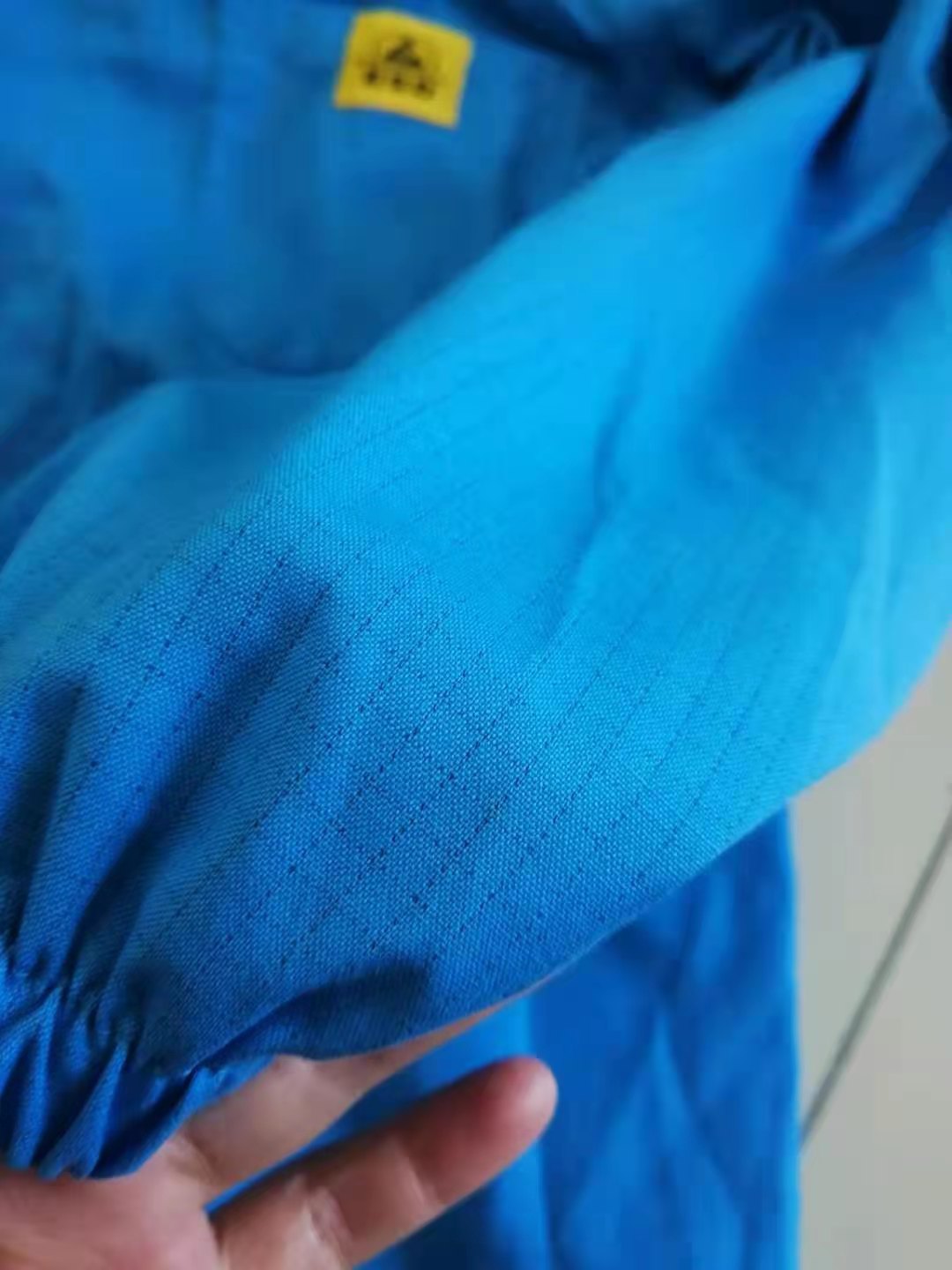
Whatsapp//Wechat: 86-13427954596
Facebook:
www.facebook.com/li.karen.184881
Email:
karen@kyd-esd.com
sales@kyd-esd.com
sales001@kyd-esd.com
In many industries, work clothes are required to have the functions of both anti-static clothing and dust-free clothing, so how to identify an anti-static clothing with dust-free performance? Let us tell you some tips below.
1. Observe whether the anti-static fiber added to the fabric will become a source of dust through a microscope
Anti-static clothing requires the use of conductive fibers, and incorrect selection of conductive fibers may cause pollution. At present, there are two common conductive fibers: surface carburized antistatic fibers and composite spinning antistatic fibers. Among them, the surface carburized antistatic fiber is easily peeled off due to washing and friction, which increases the amount of dust generated by the fabric, so it cannot be used in clean rooms.
2. Observe whether the fabric is woven with filament fibers through a microscope
Natural fibers such as cotton and linen are easy to produce particles at the end of the fibers, which are easy to vacuum and generate dust, and cannot be used in clean rooms. Therefore, anti-static clothing is made of chemically synthesized filament fibers. In addition, it is necessary to observe whether the fiber contains impurities through a microscope. If there are too many impurities, it cannot be used in a clean room.
3. Check the accessories of the clothing
Many accessories of anti-static clothing may cause pollution to the clean room, such as: sewing thread containing short fibers, label washing, ear mesh, cuff rib, foot rib, dusty brushed hook and loop, and the coating will fall off Zippers, clothing labels with printing inks that are easy to fall off, etc. For a qualified anti-static clothing, each of its accessories must not be dust-prone.
4. Drum test
In addition to these simple and conventional methods above, IEST-RP-CC003.3 specifies the Helmke drum test method. This test method is to tumble clothing or consumables in a stainless steel drum, and use an air particle counter to test each cubic foot. The number of particles of a given size. This method can more scientifically and clearly test whether the dust-free performance of anti-static clothing meets the requirements.